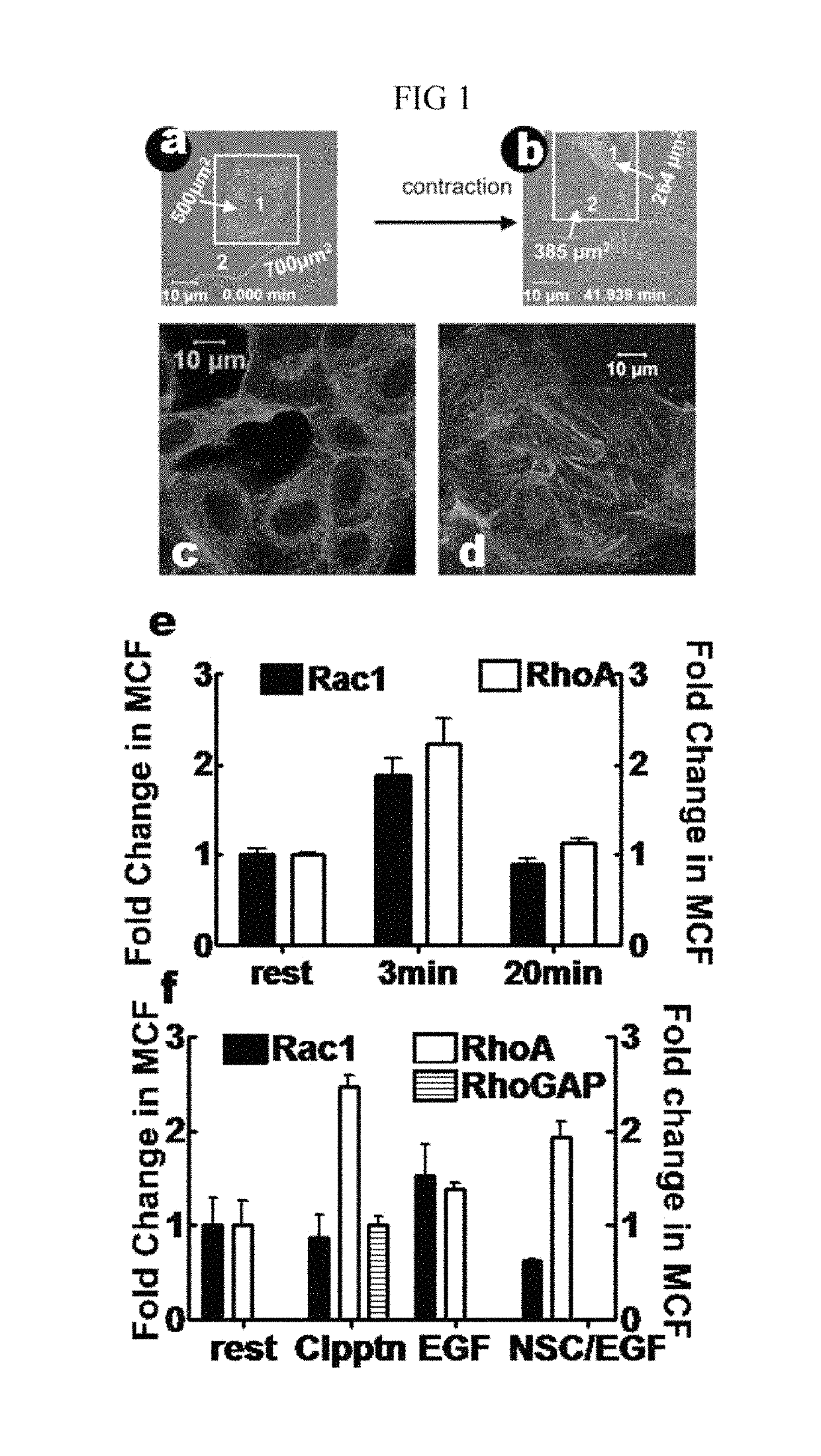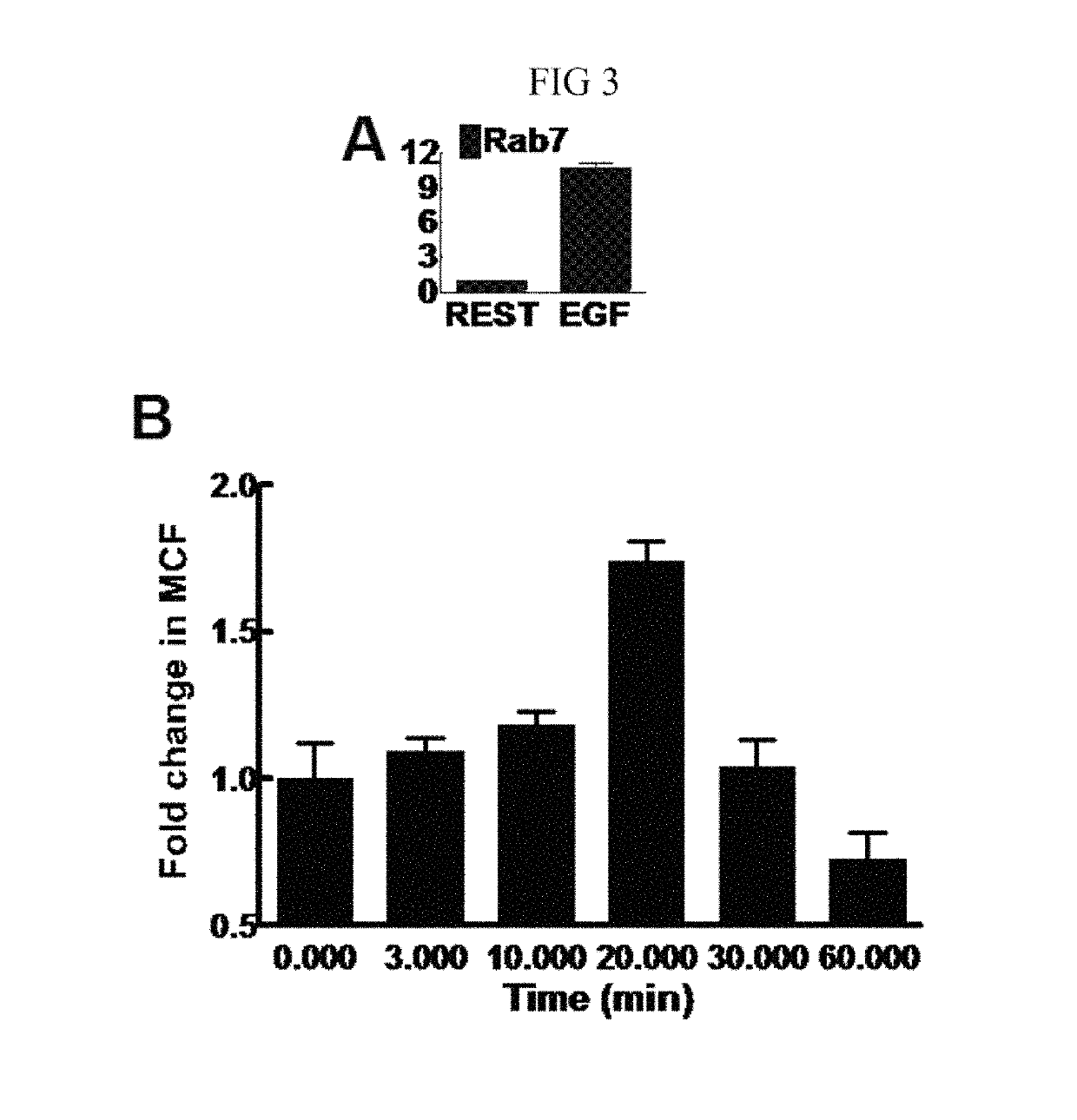Activated GTPase-based assays and kits for the diagnosis of sepsis and other infections
a technology of sepsis and kit, which is applied in the direction of disease diagnosis, instruments, biological material analysis, etc., can solve the problems of significant limitations and still laborious, and achieve the effects of improving clinical care, monitoring the therapeutic effect of intervention, and improving survival
- Summary
- Abstract
- Description
- Claims
- Application Information
AI Technical Summary
Benefits of technology
Problems solved by technology
Method used
Image
Examples
example 1
Effector Flow Cytometry Bead (EFCB) Assay
[0116]A novel flow based assay was platformed by monitoring GTPase activation in two different cell types (Vero E6 cells as well as HeLa cells used for-Rab7 experiments), suggesting that the assay is readily generalizable to different cell types. By coating beads with different effectors and multiplex analysis of fluorescent bead sets bearing different effectors30 the assay can be extended to the simultaneous and high throughput analysis of multiple GTPases from the same cell lysate sample. We therefore anticipate that this approach will enable investigations into the interconnection of signaling networks with GTPase activation in normal cellular functions as compared to viral or bacterial infections or other pathogenic processes.
[0117]For productive infection of host cells, viruses typically activate multiple cellular GTPases to promote the cytoskeletal remodeling required for breaching inter and intracellular cellular barriers to infection ...
example 2
Flow Cytometry Assays for the Diagnosis of Sepsis
[0132]Patient Cohort. The UNM Hospital (UNMH) is the only level 1 trauma center in the state of NM. According to the UNMH trauma registry the patients admitted between Jan. 1, 2008 and Dec. 31, 2012 comprised of 13,144 adults. Thus, an average of 500-600 trauma patients are admitted to our ICU annually, with an average of 200-250 complicated trauma patients defined as having a length of stay greater than 5 days with a high injury severity scare (ISS)>20. Of the complicated trauma ICU patients, ˜100-125 patients per year had sepsis spanning the range: sepsis (Systemic Inflammatory Response (SIRS) with infection), severe sepsis (organ dysfunction, or septic shock (severe sepsis with hypotension). The nature of injuries and associated infection are listed in Table 2 below.
[0133]
TABLE 2Association of pathogen with traumatic site of injury and time from presentationSite of injuryPathogentdxSoft tissue: stab, gunshot, Staphylococcal and Str...
example 3
Rapid Parallel Flow Cytometry Assays of Active GTPases Using Effector Beads
[0161]Here we describe a rapid, bead-based effector-binding assay that can monitor the activation status of multiple GTPases from a single cell lysate derived from Sin Numbre hantavirus (SNV) in the course of a productive infection.
[0162]Hantaviruses, which cause hemorrhagic fever with renal syndrome (HFRS) and hantavirus cardiopulmonary syndrome (HCPS), are of particular interest because their mechanisms of host cell entry and subsequent pathogenesis are poorly understood [9B]. Viruses attach to cell surface receptors, promote the cytoskeletal remodeling required for breaching inter- and intracellular cellular barriers, and enter the cell through endocytic membrane trafficking pathways; all processes that fundamentally depend on the activation of various GTPase cascades [10B]. Parallel measurements of active GTPases downstream of receptor engagement are therefore important for understanding how these signals...
PUM
 Login to View More
Login to View More Abstract
Description
Claims
Application Information
 Login to View More
Login to View More - R&D
- Intellectual Property
- Life Sciences
- Materials
- Tech Scout
- Unparalleled Data Quality
- Higher Quality Content
- 60% Fewer Hallucinations
Browse by: Latest US Patents, China's latest patents, Technical Efficacy Thesaurus, Application Domain, Technology Topic, Popular Technical Reports.
© 2025 PatSnap. All rights reserved.Legal|Privacy policy|Modern Slavery Act Transparency Statement|Sitemap|About US| Contact US: help@patsnap.com



